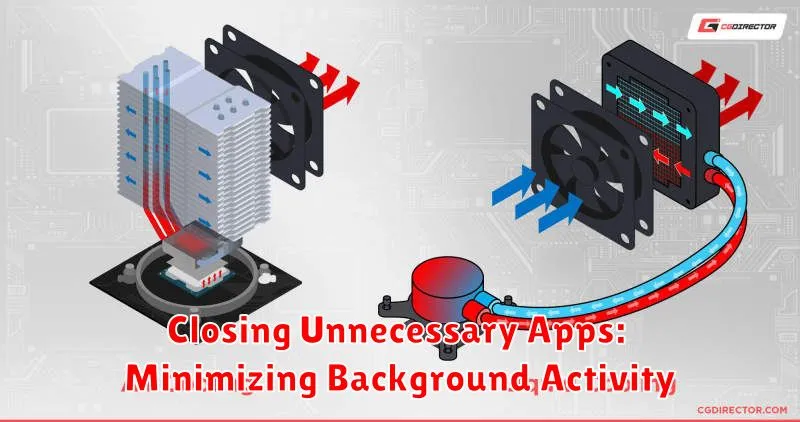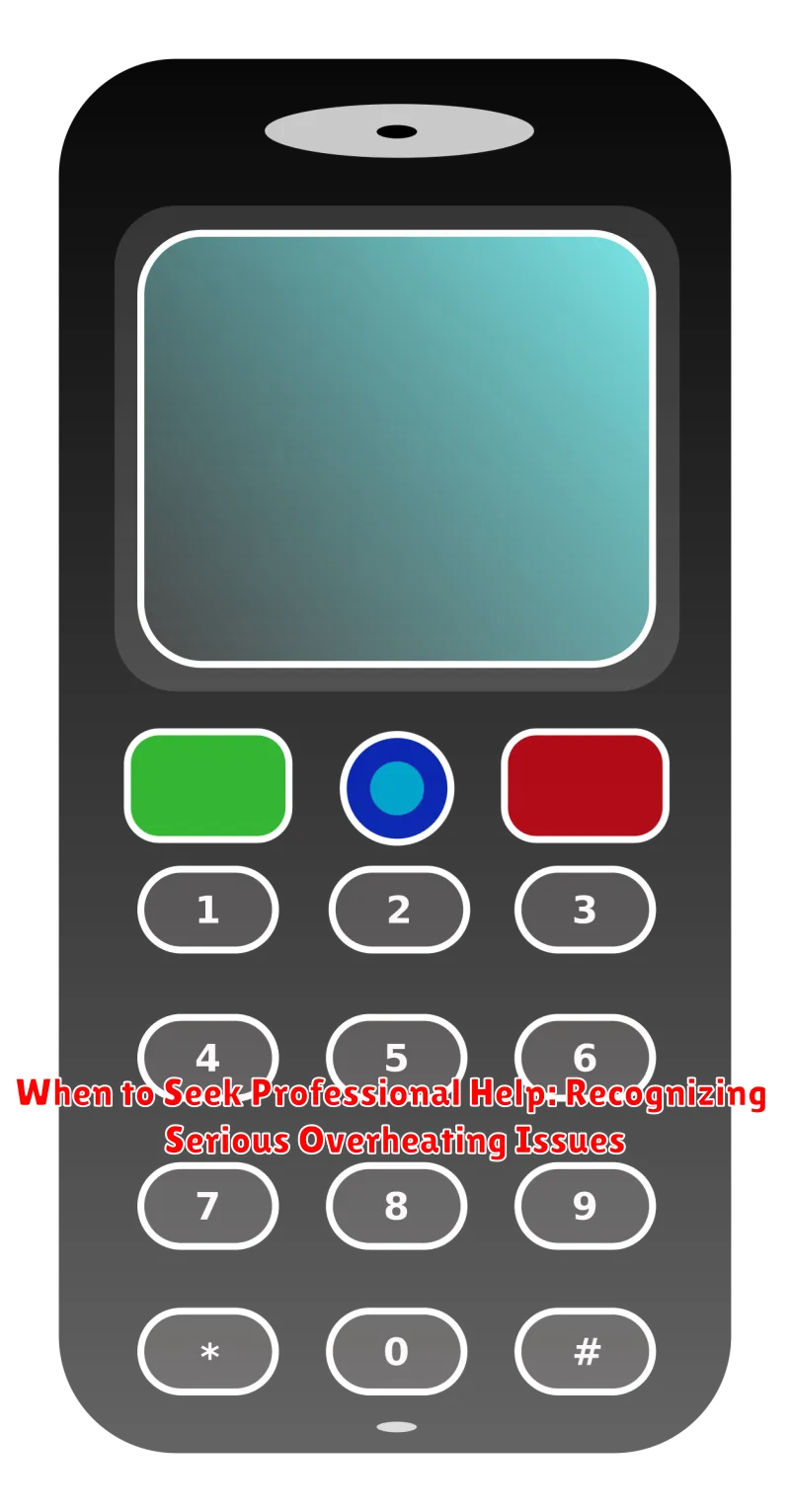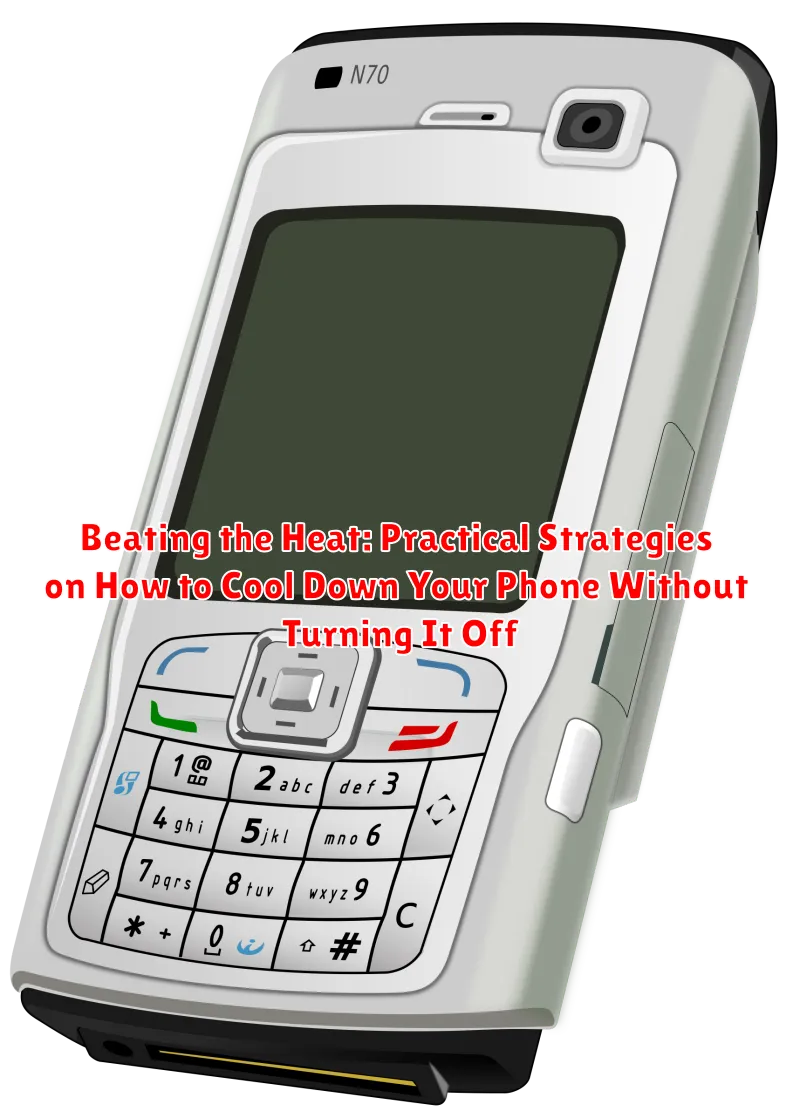In today’s hyper-connected world, our smartphones are indispensable tools for communication, navigation, entertainment, and productivity. However, these pocket-sized powerhouses are susceptible to overheating, especially during extended use, in hot environments, or while running demanding applications. Overheating can lead to reduced performance, battery drain, and even potential hardware damage. This article, “Beating the Heat: Practical Strategies on How to Cool Down Your Phone Without Turning It Off,” provides a comprehensive guide to understanding the causes of phone overheating and implementing effective strategies to prevent and mitigate this common issue, ensuring your device remains functional and safe.
This guide is designed to equip you with practical, actionable advice on how to cool down your phone effectively without the inconvenience of powering it off. From managing app usage and adjusting display settings to optimizing your phone’s environment and utilizing external cooling solutions, we will delve into a variety of techniques to help you maintain optimal device temperature. By mastering these methods, you can safeguard your phone’s longevity, improve its performance, and enjoy a seamless user experience, no matter the external conditions. Let’s explore how to beat the heat and keep your smartphone running cool!
Understanding Why Your Phone Overheats
Several factors can contribute to your phone overheating. One primary reason is intensive usage. Running resource-heavy applications like games, video streaming, or augmented reality apps puts a significant strain on the processor, generating heat.
Prolonged charging, especially with a faulty or incompatible charger, can also lead to overheating. Similarly, leaving your phone plugged in after it’s fully charged can contribute to the issue.
Furthermore, environmental factors play a crucial role. Direct exposure to sunlight or leaving your phone in a hot car can rapidly increase its internal temperature. Inefficient software or operating systems can also cause the phone to work harder than necessary, resulting in heat generation. The age and overall health of the battery itself can be a contributing factor, as older or damaged batteries are more prone to overheating.
Immediate Actions: Quick Ways to Reduce Phone Temperature
When your phone begins to overheat, swift action is crucial to prevent potential damage and discomfort. Here are several immediate steps you can take to reduce your phone’s temperature:
1. Move to a Cooler Environment
The first and most effective step is to move your phone to a cooler, shaded area. Avoid direct sunlight and hot environments, as these exacerbate overheating.
2. Power It Down Temporarily
If possible, power off your phone for a few minutes. This allows all processes to cease and the device to cool down rapidly. If you cannot power it off, proceed to the next steps.
3. Remove from Pockets or Confined Spaces
Take the phone out of your pocket, bag, or any confined space where heat can build up. Expose the phone to open air to promote cooling.
4. Disconnect from Charging
If your phone is charging, disconnect it immediately. Charging generates heat, and continuing to charge an already overheated device can cause further issues.
5. Avoid Demanding Applications
Refrain from using any resource-intensive applications, such as games or video streaming services, until the phone has cooled down. These apps increase processor activity and heat generation.
Closing Unnecessary Apps: Minimizing Background Activity

Background app activity is a common contributor to phone overheating. Many applications continue to run processes even when they are not actively in use, consuming CPU resources and battery power, which generates heat.
How to Identify and Close Unnecessary Apps
To mitigate this, regularly review the apps running in the background. On most devices, you can access the app switcher (often by swiping up from the bottom or pressing a dedicated button) to see a list of currently active apps. Force-closing apps that are not essential can significantly reduce the load on your phone’s processor.
Utilizing Battery Usage Information
Your phone’s settings often provide a breakdown of battery usage by app. This information can help you pinpoint the apps that are consuming the most resources in the background. Consider limiting or uninstalling apps that exhibit high background activity if they are not essential.
Benefits of Minimizing Background Activity
By effectively managing background app activity, you not only reduce the risk of overheating but also extend battery life and improve overall phone performance.
Adjusting Screen Brightness and Refresh Rate
Screen brightness and refresh rate are significant contributors to phone overheating. A brighter screen consumes more power, generating more heat.
To mitigate this:
- Lower Screen Brightness: Manually reduce the screen brightness to a comfortable level or enable auto-brightness. This feature dynamically adjusts brightness based on ambient light, conserving battery and reducing heat.
- Reduce Screen Timeout: Shorten the screen timeout duration. A shorter timeout means the screen turns off sooner, preventing unnecessary power consumption.
- Adjust Refresh Rate: High refresh rates (e.g., 120Hz) offer smoother visuals but demand more processing power. If your device allows, switch to a lower refresh rate (e.g., 60Hz) to lessen the load on the processor and reduce heat generation. Many phones offer an ‘adaptive’ setting that automatically adjusts refresh rate based on the content displayed.
By optimizing these settings, you can effectively decrease the strain on your phone’s battery and processor, leading to a noticeable reduction in heat production.
Disabling Location Services and Bluetooth When Not in Use
Leaving location services and Bluetooth enabled when they are not actively being utilized can contribute to increased phone temperature. These features continuously scan for signals, which puts a strain on the device’s processor and battery.
Turning off location services prevents apps from constantly tracking your whereabouts, reducing background activity. Similarly, disabling Bluetooth stops the phone from searching for nearby devices, further conserving energy.
Consider these simple steps:
- Go to your phone’s settings menu.
- Navigate to the location or privacy section and disable location services.
- Access the Bluetooth settings and turn Bluetooth off.
By disabling these features when not needed, you can significantly reduce the load on your phone’s components and help maintain a cooler operating temperature.
Avoiding Direct Sunlight and Hot Environments
Direct sunlight and hot environments are significant contributors to phone overheating. Extended exposure can cause your device to struggle with heat dissipation, leading to performance throttling and potential damage.
Sunlight Exposure:
- Minimize time spent with your phone exposed to direct sunlight.
- Utilize shade whenever possible, such as keeping your phone in a bag or under an umbrella.
- Avoid leaving your phone on the dashboard of a car.
Hot Environments:
- Do not leave your phone in a parked car, especially during warm weather. The internal temperature can rise rapidly.
- Keep your phone away from heat-generating appliances or devices.
- Avoid using your phone extensively in saunas or other high-temperature environments.
By taking these precautions, you can effectively prevent your phone from overheating due to environmental factors.
Removing Your Phone Case: Enhancing Airflow
Phone cases, while providing protection, can also trap heat. Removing your phone case allows for better airflow around the device, facilitating heat dissipation. This simple action can significantly contribute to lowering your phone’s temperature.
Consider these points:
- Material Matters: Some case materials, like thick rubber or plastic, are more insulating than others. If your phone frequently overheats, consider switching to a more breathable case or using your phone without a case when possible.
- Temporary Solution: Removing the case is a temporary fix. If overheating persists, investigate other potential causes.
- Balance Protection and Cooling: Evaluate when your phone needs maximum protection versus when it needs maximum cooling. You might only remove the case during periods of intense use, such as gaming or video recording.
Using Airplane Mode Strategically
Activating Airplane Mode can be a strategic method to cool down your phone, especially in situations where network connectivity is not immediately required. When enabled, Airplane Mode instantly disables all wireless communication features, including cellular, Wi-Fi, and Bluetooth.
This action significantly reduces the processing load on your device as it stops actively searching for and maintaining connections. Consequently, your phone expends less energy, leading to a decrease in heat generation. This is particularly beneficial if your phone is overheating due to prolonged use of data-intensive applications or weak signal strength.
Consider using Airplane Mode during periods of inactivity, such as when you are commuting in areas with poor reception or when you are primarily using your phone for offline tasks like reading downloaded content or listening to music already stored on your device. Remember to reactivate normal mode when connectivity is needed.
Optimizing Battery Usage: Preventing Overheating
Battery usage significantly contributes to phone overheating. Optimizing battery consumption can effectively prevent your phone from getting too hot.
Strategies for Battery Optimization
Consider these strategies to reduce battery strain:
- Enable Battery Saver Mode: Most smartphones have a built-in battery saver mode that reduces performance and background activity.
- Monitor Battery-Intensive Apps: Identify apps that consume a significant amount of battery and limit their usage or find alternatives.
- Disable Background App Refresh: Prevent apps from refreshing in the background when not actively used.
- Lower Screen Timeout: Reduce the amount of time your screen stays on when inactive.
- Keep Software Updated: Software updates often include battery optimization improvements.
Additional Tips
Further reduce battery strain and the risk of overheating by:
- Avoiding extreme temperatures while charging.
- Using the original charger provided by the manufacturer.
When to Seek Professional Help: Recognizing Serious Overheating Issues

While the aforementioned strategies can often resolve minor overheating issues, persistent or severe overheating may indicate a more serious underlying problem. It is crucial to recognize the signs that warrant professional intervention.
Consider seeking professional help if you observe any of the following:
- Frequent and Recurring Overheating: If your phone overheats regularly, despite your best efforts to cool it down.
- Swollen Battery: A physically swollen battery is a sign of a critical malfunction and potential safety hazard. Immediately cease using the device and seek expert assistance.
- Inability to Power On: If the phone overheats and then refuses to turn on, a component may have been damaged.
- Unusual Noises or Smells: Hissing, crackling sounds, or a burning odor emanating from the phone are red flags.
- Visible Damage: Cracks, melting, or other visible damage resulting from overheating necessitate professional repair.
Ignoring these warning signs can lead to irreversible damage to your device and potential safety risks. A qualified technician can diagnose the underlying cause of the overheating and perform necessary repairs or replacements.

